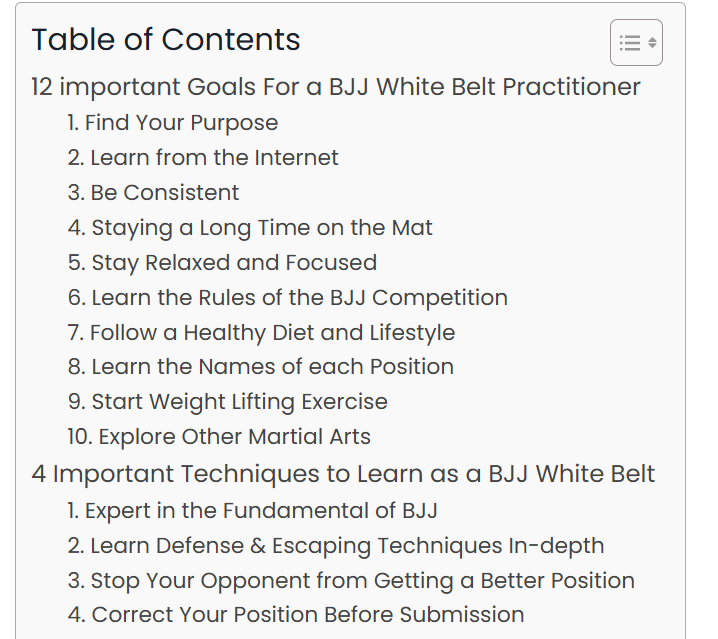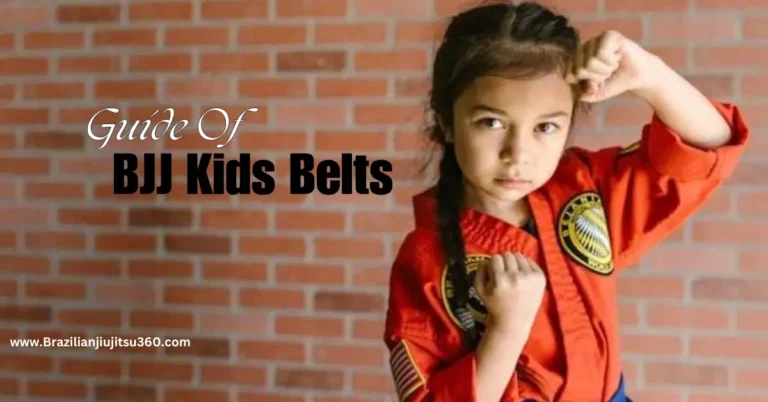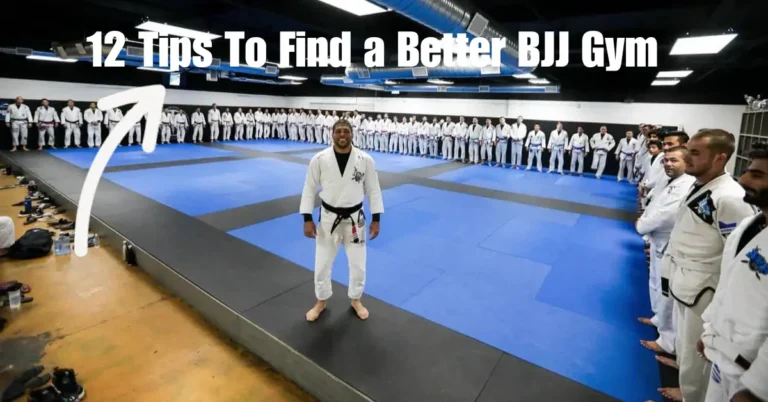BJJ Blue Belt Requirements (10 Steps)
When students start BJJ, they receive a white belt with no special requirements. However, to earn the blue belt (second belt) you must meet the BJJ blue belt requirements, which include being at least 16 years old, attending about 125 classes, and practicing around 360–400 hours. You also need to learn key positions, standing moves, escapes, basic sweeps, one submission, guard defense, and how to pass guard.
Let’s discuss the top 10 BJJ blue belt requirements to achieve it.
1. At Least 16 Year Old (IBJJF Requirements)
The first BJJ blue belt requirement is that you must be at least 16 years old. This requirement, set by the International Brazilian Jiu-Jitsu Federation (IBJJF), ensures that the student has reached the minimum age to receive a blue belt in Brazilian Jiu-Jitsu. If they are younger than 16, they will instead progress through the kids’ belt system. Learn more here BJJ Kids Belts Explained.
2. Learning Time (Take on Average 125 Classes)
To progress to the blue belt in BJJ, consistent learning is important. On average, you must attend 25 classes to earn each stripe, totaling around 125 classes to complete all four stripes in the BJJ white belt before moving to the blue belt. However, this may vary depending on the academy, as some may require more or fewer classes. Achieving all four stripes on average takes 1 to 2 years.
3. Practicing Time (360 to 400 Hrs Practice on the Mat)
When you attend proper classes and learn the techniques, the next step is practice. You should aim to practice on the mat for an average of 360 to 400 hours. Make sure to dedicate this time and practice properly.
Now let’s discuss the techniques required to progress from a BJJ white belt to a blue belt.
4. Learn Proper Body Positioning
BJJ is not just about being strong, it’s about using smart techniques the right way. One of the most important things a white belt should learn is how to position their body correctly. Good body positioning helps you stay safe and also control your opponent better, whether you’re attacking or defending.
There are a few main positions you should learn and practice:
- Guard: This is when you are on your back, using your legs to control your opponent. Some types include closed guard, open guard, and half guard.
- Top Control: This is when you are on top of your opponent, using positions like mount, side control, knee-on-belly, and north-south to stay in control.
- Back Control: This is when you are behind your opponent. You use your legs (called hooks) and arms (seatbelt grip) to keep them in place and control them.
5. Learn the Basics of Basic Standing Techniques:
In BJJ, fights usually start with both people standing. This is also very important for self-defense because, in real life, fights mostly begin while standing.
So, before learning how to fight on the ground, you should first learn how to stay safe and in control while standing. Having good standing skills helps you get close to your opponent safely.
It also helps you take them down to the ground or stop them from taking you down. To move from white belt to blue belt, you need to learn some basic standing skills:
- Takedowns and Takedown Defense: Learn simple ways to bring your opponent to the ground, like the single-leg and double-leg takedowns. Also, practice how to stop them from taking you down by sprawling and keeping your balance.
- Grip Fighting: Learn how to grab your opponent’s uniform (gi) or body in the right way.
- Clinching: This means getting close and holding your opponent so they can’t move easily.
6. Learn How to Escape from Bad Positions
To move from a white belt to a blue belt in BJJ, you must learn how to escape from bad positions. These are situations where your opponent is in control, and you are stuck.
As a white belt, you will spend 1 to 2 years practicing how to escape from these tough spots. These skills are not just important for BJJ, but also for real-life self-defense.
By the time you become a blue belt, you should feel confident and know what to do in these situations.
For example, if your opponent is sitting on top of your chest, you can escape by pushing your hips up and turning to the side. This helps create space to move and get out.
Another example is when your opponent is lying across your body from the side. You can escape by using your arms and legs to push them away and turn your body to a better position.
You can also watch the videos to learn more about the escapes:
7. Learn Basic Sweeps (How to Turn Your Opponent Over)
To become a blue belt in BJJ, you need to learn some basic sweeps. Sweeps are moves you use when you are on the bottom, and you want to flip your opponent over so you can get on top.
Sweeping means using your legs, hips, or body to unbalance your opponent and turn them over. This helps you go from a weak position to a strong one where you have more control.
Some common sweeps you should learn are the scissor sweep, hip bump sweep, and flower sweep. These will help you change the situation in a match and take the upper hand.
8. Become an Expert in at Least One Submission
A submission is a move you use to make your opponent give up, also called “tapping out.” Submissions usually involve joint locks (like arm bars or ankle locks) or chokeholds (like the rear-naked choke or triangle choke). These moves put pressure on the body or stop the person from breathing properly, so they have to stop the fight.
To become a blue belt in BJJ, you don’t need to know every submission. But it’s important to learn at least one submission really well and be good at using it.
If you master just one submission, it can be enough to win a match or protect yourself in a real-life situation.
9. Learn the Basics of Guard Retention
To move from white belt to blue belt in BJJ, it’s important to learn guard retention. This means keeping your guard strong when your opponent tries to get past your legs.
The guard is a position where you are on the bottom, but you use your legs to control or block your opponent. Guard retention helps stop them from passing your legs and getting into a better position, like side control or mount.
There are many types of guard retention, but you don’t need to learn them all. For now, just focus on the basic ones. That’s enough to meet the blue belt requirements and protect yourself better during a match.
10. Learn the Basics of Passing Guard
To move up to the next belt in BJJ, it’s important to learn how to pass the guard. Passing guard means getting past your opponent’s legs so you can move into a stronger position to control them.
When someone is in guard, they are on their back with their legs around you, using their legs to stop you from moving freely. To pass the guard, you need to find a way to get past their legs and get into a better position like side control or mount, where you are on top and have more control.
Summary:
To earn your BJJ blue belt, you must first meet the minimum age requirement of 16 and commit to consistent training, usually attending around 125 classes and practicing 360 to 400 hours on the mat.
Alongside this time and effort, you need to master important techniques and skills, including:
- Proper body positioning such as guard, top control, and back control
- Basic standing techniques like takedowns, grip fighting, and clinching
- Escaping from bad positions confidently
- Performing basic sweeps to reverse your opponent
- Becoming proficient in at least one submission move
- Developing guard retention to prevent your opponent from passing
- Learning how to pass your opponent’s guard effectively
Fulfilling these requirements shows that you have built a strong foundation of knowledge and practical skills, preparing you to progress confidently to the blue belt level in Brazilian Jiu-Jitsu.
Hope you have like our article if you have any quesiton feel free to comment below!
You may like the our article about “12 Important Goals & 4 Techniques“

FAQs
Q: Is there any Test for BJJ Blue Belt?
Some BJJ schools have a test for the blue belt, where students show their skills by doing techniques like escapes, sweeps, submissions and more as discuued in the article. They may also be asked to spar and show how well they understand different positions.
In many schools, there is no formal test. Instead, the coach watches students during regular classes to see how much they’ve improved. They look at how well students use techniques, their effort, and how often they train to decide if they are ready for the blue belt.
Here is Some More Related Articles:

- How Long Does it Take to Get a Black Belt in BJJ
- Highest Belt in BJJ
- BJJ Blue Belt: Complete Guide with FAQs

I am an SEO blogger and freelancer for the past 5 years. I don’t just write or work for bots like Google or Bing. My writing and other work, like SEO, design and more, are for real users who get real value from it. It is my responsibility to make sure that when a user comes looking for something, they get a complete answer to their query.







